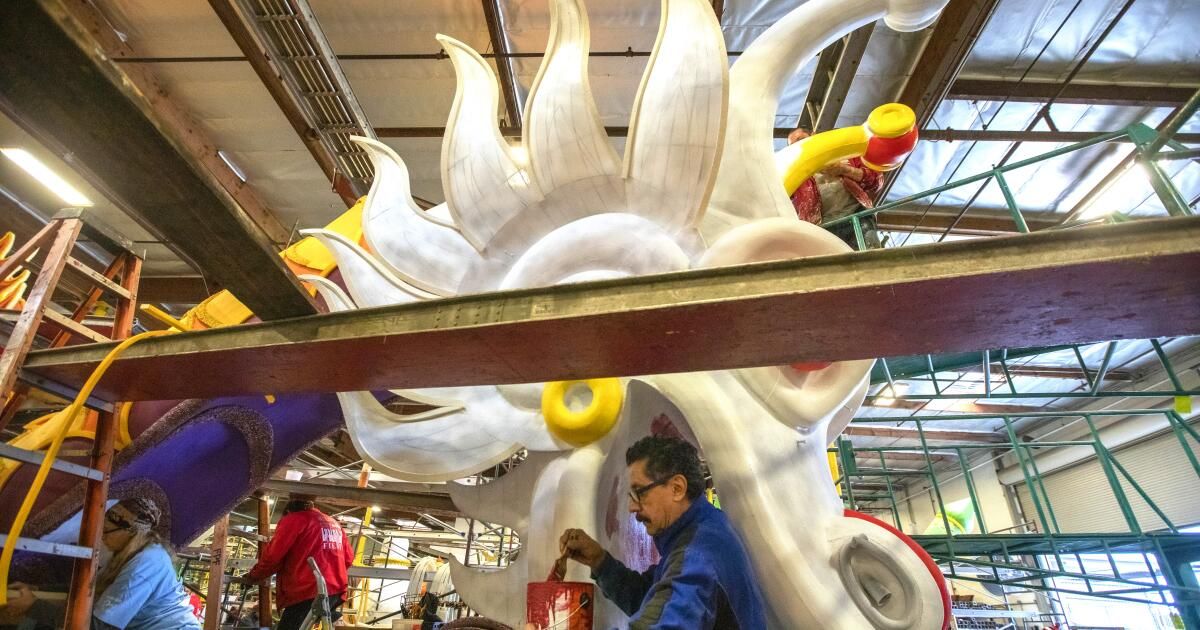Antonio de Jesus Lopez headed to the Fiesta Parade float yard in Irwindale, pushing a red platform with two large signs for his first Rose Parade float of 2020.
The warehouse around him was filled with the hum of circular saws and the sparks of welding tools as his co-workers dismantled floats from previous years of the iconic Rose Parade.
In his first few days at the company, de Jesus Lopez said, he was excited to come to work and hone his artistic skills alongside designers, decorators, engineers and welders, many of them Latino. The camaraderie, he said, made for a pleasant work environment.
“It almost felt like you were working with your uncle or your grandmother,” de Jesus Lopez said. Now, he said, “it feels somber.”
Brittany Smith works on a Kaiser float for the Rose Parade at Fiesta Parade Floats on Dec. 26, 2023, in Irwindale.
(Irfan Khan/Los Angeles Times)
It's been a tough two weeks for the 18 employees of Fiesta Parade Floats, one of the leading float builders for the Tournament of Roses Parade. After almost 40 years, Fiesta closes after the Pasadena Tournament of Roses Association. cut ties with the company, saying the firm no longer met the criteria set for float builders.
David Eads, executive director of the Pasadena Tournament of Roses, said in a telephone interview that criteria included maintaining financial responsibility, insurance coverage, flower suppliers, a physical location and experienced workers to build and operate the floats. He declined to say what criteria the Fiesta Parade floats did not meet.
Eads said the ban “was not a decision that the association came to quickly or easily.” He added that it was the first time in recent years that a float builder was unable to participate in the tournament.
Eads said the Rose Parade thanks the company for its “decades of service” and its award-winning work, which included a float recognized by the Guinness World Record in 2017 for the heaviest and longest single-chassis parade float.
Tim Estes, owner of Fiesta Parade Floats, said the association's decision was a punch in the gut.
“I feel horrible,” Estes, 68, said. “I feel horrible for my workers. “I feel bad for my customers who depended on us to build nice floats… I feel like I let them all down.”
Estes said his company had been struggling financially since the COVID-19 pandemic, when it was forced to temporarily close, costing it about $3.2 million. He said 85% of the company's revenue came from the floats he builds for the Rose Parade.
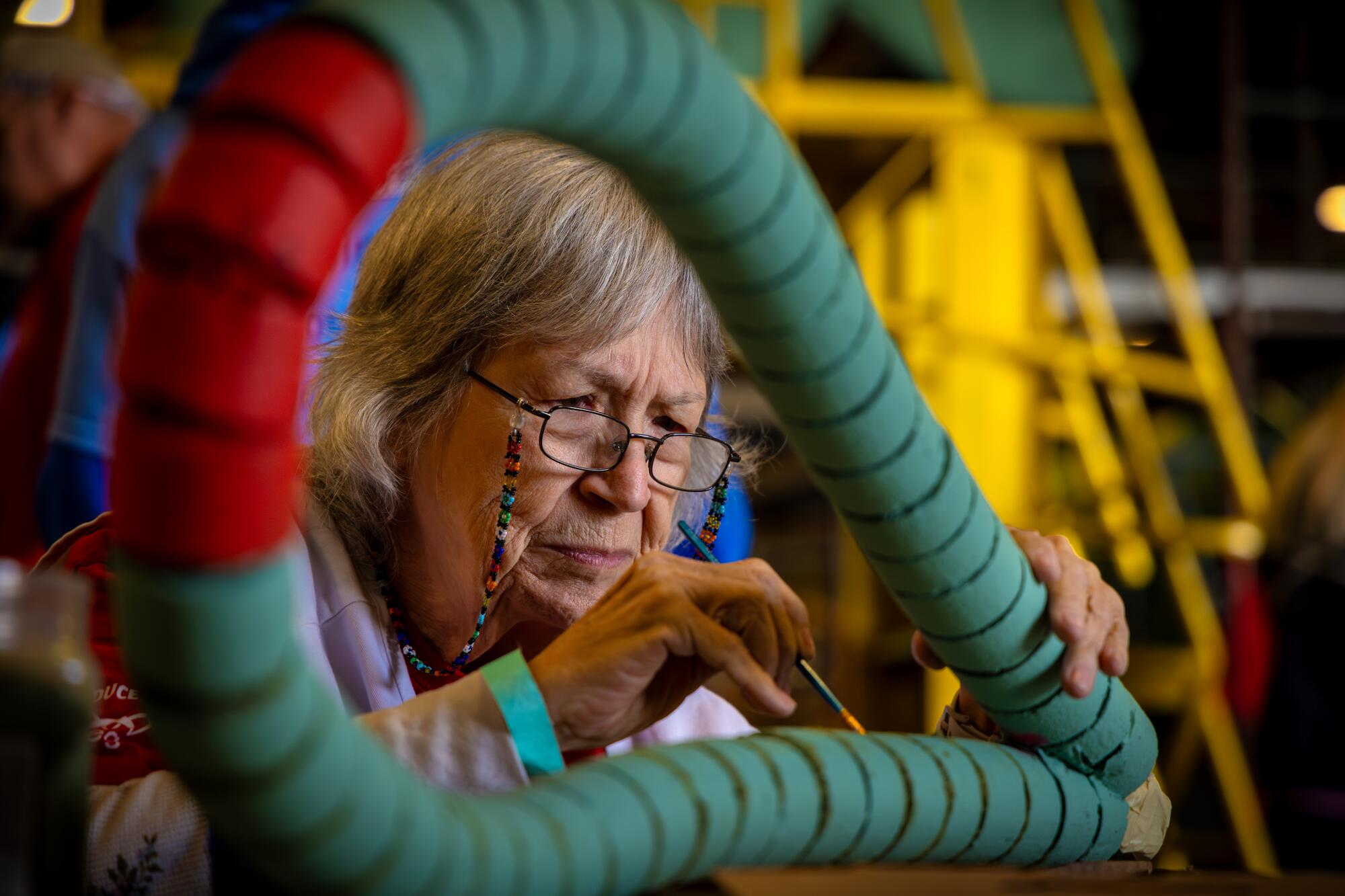
Victoria Boyd, 79, has been flying in from a small southern Illinois town on Christmas Eve for 36 years to join her friends in decorating floats for the annual Rose Parade. Boyd works on a float at Fiesta Parade Floats on Dec. 26, 2023, in Irwindale.
(Irfan Khan / Los Angeles Times)
He said the financial blow also came when he was in a motorcycle accident that resulted in a fractured skull, seven broken ribs and multiple surgeries. He said he was hospitalized for nine weeks.
Estes said he began going into debt when he fell behind on rent and utilities for the warehouse he rented from the Tournament of Roses Association, which has two warehouses in Irwindale and another in Azusa.
Things improved slightly when the Rose Parade returned in 2022. But by then, Estes said, it had lost nearly half its workforce due to retirement, moves to other states and other jobs.
Estes said the number of floats the company was building was cut in half, from about a dozen. Then inflation arrived. Soon, a sheet of plywood that previously would have cost $16 rose to $66, he said. The cost of everything from flowers to labor increased.
Estes said he always made sure his workers got paid first. He said he was making progress on paying off unpaid rent and utilities when he received a letter from the association saying his company was no longer in good standing and could not build floats for the Rose Parade.
Estes said his company had been working on floats for three clients, including one for the city of Torrance and another for One Legacy, a Southern California nonprofit that helps recover kidneys, livers and other organs from deceased donors. for transplants.
Eads said that for the past eight years, Fiesta Parade Floats was among three companies authorized to build floats for the Rose Parade. At one point in the association's history there were as many as 10 builders, Eads said, but that was when the floats were much smaller.
Eads is confident the remaining two float builders will be able to handle the additional workload and does not expect the loss of a float builder to have an effect on future parades.
Jin Chun, spokesperson for the city of Torrance, said it was unfortunate that the Fiesta Parade Floats was closing. He said the partnership was connecting the city and others with other float manufacturers.
“We look forward to another successful and award-winning float for the 2025 Pasadena Tournament of Roses Parade,” Chun said.
Estes said he was still dealing with the closure of his company, which he founded in 1988. Building floats for the Rose Parade had been a childhood dream, he said. When he was 8, he helped decorate his first float, he said, and played around the floats with a friend.
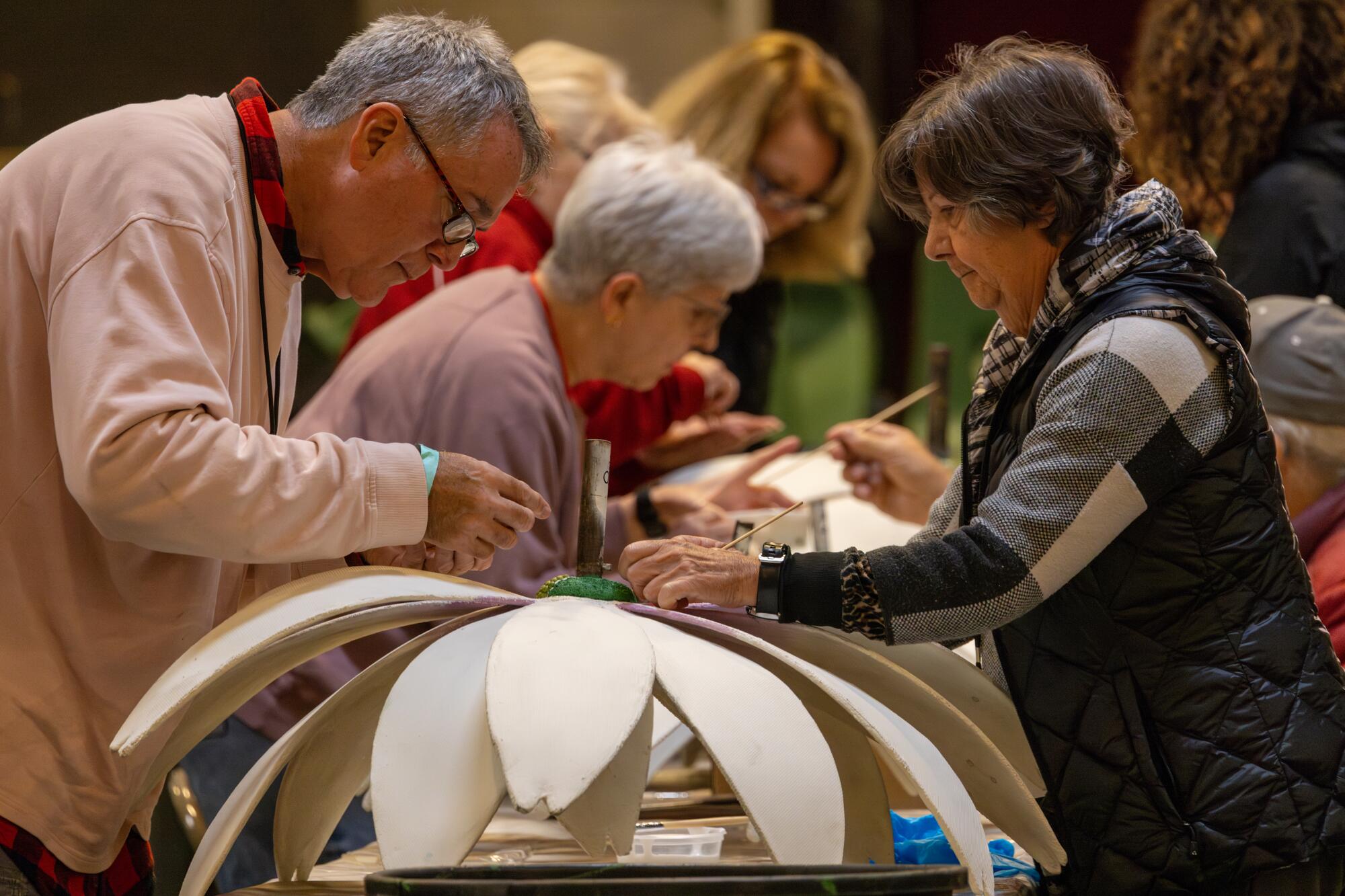
Tim Desjean, left, Elsa Goodman and other volunteers work on a Torrance Rose Parade float at Fiesta Parade Floats.
(Irfan Khan / Los Angeles Times)
“When I was little I always liked to crawl among them,” he said. “I was fascinated by how they were built.”
He said that, although he ultimately had financial problems, he was very proud of his workers, a “great team,” he said, who contributed to the company's long success. The warehouse's full-time staff now numbers around 18 people. Several have been with the company for more than 20 years.
He said that in the last three years, 17 of the company's 18 floats have won awards.
Estes said he informed workers of the association's decision on June 21.
“God, it was murder,” she said. “To be there and tell them what’s going on and that they’re going to be out of work soon… it’s a horrible feeling.”
Since then, Estes said he hasn't been able to sleep. He worries about the workers' well-being and how he will manage to empty an entire floating construction warehouse.
He said he had to move three times before and each move ended up costing hundreds of thousands of dollars and took about three and a half months. He said he has two weeks left to vacate the building.
He's not the only one who lacks sleep.
Maricela Arámbula, 61, said she hasn't gotten much sleep at night since she learned the company would close and she would be out of a job.
“As you get older, it's harder to find a job,” he said.
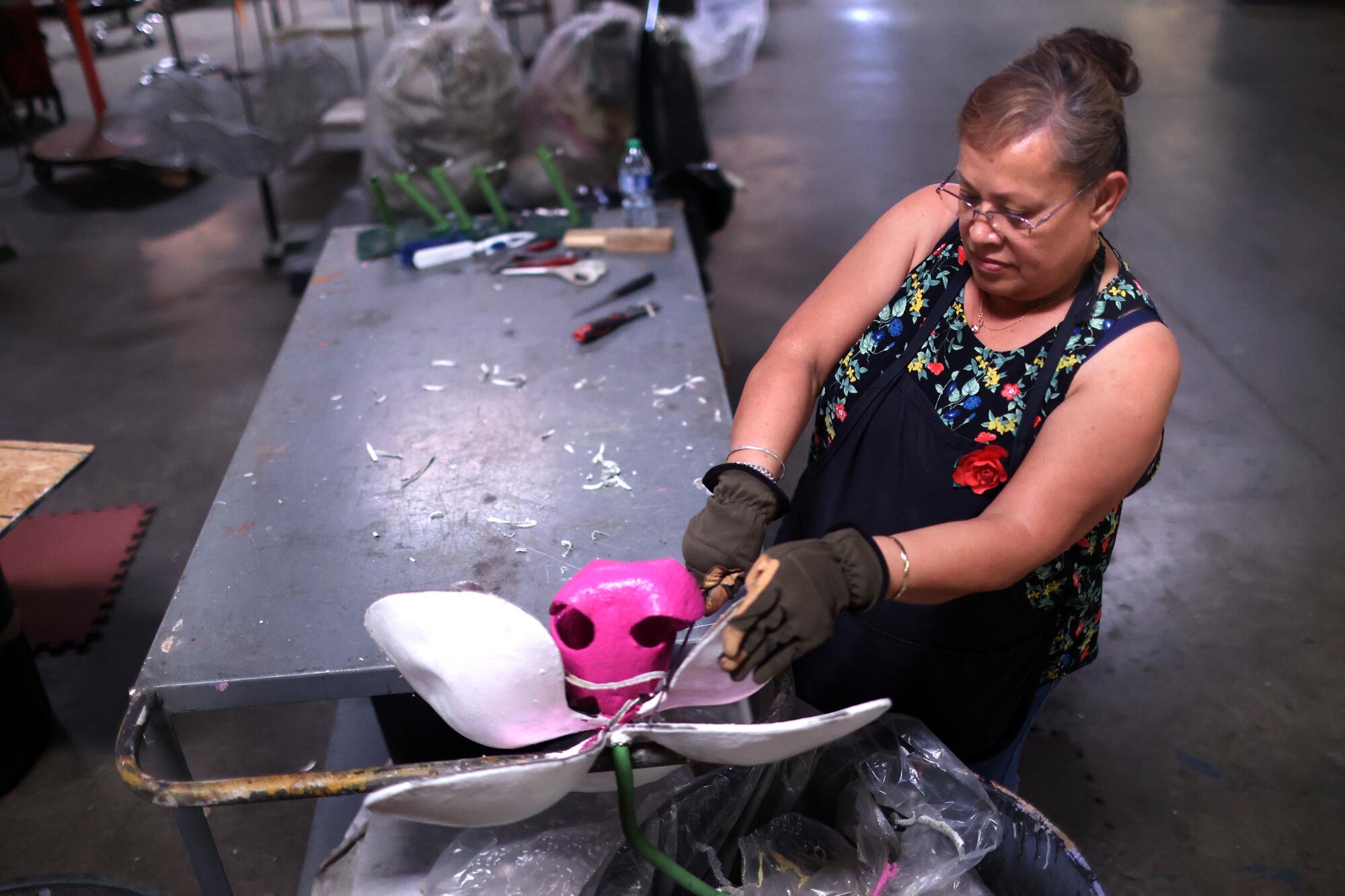
Maricela Arambula trims the edges of a float piece at the Fiesta Rose Parade Warehouse on Thursday in Irwindale.
(Michael Blackshire / Los Angeles Times)
On a recent Thursday afternoon, I was cutting the mesh off of a flower sculpture, tossing it into a plastic bag, and placing the sculpture in a pile for the next company to use.
Arámbula said he has been with the company since it has existed.
“My son was two years old when I started working,” he said, smiling. “He is now 40 years old.”
Arambula said he began working in the float-building business in 1986, five years after arriving in the United States from Mexico, where he made a living creating paper flowers.
She said that skill helped her land a job at the company, where she learned how to attach mesh netting to metal sculptures that would then be decorated with flowers, petals, spices and seeds. She said her time at the company has allowed her to learn other skills.
“I love this job,” she said. “I don’t think I would have worked as long as I did if I didn’t.”
She said working at the company not only helped her raise her son and daughter, but also helped her support her parents in Mexico.
When they visited a few years ago, she took them to see the Rose Parade. It was raining hard, but her parents were enjoying the parade too much to care. She said she remembered pointing out to her mother which floats she had helped create.
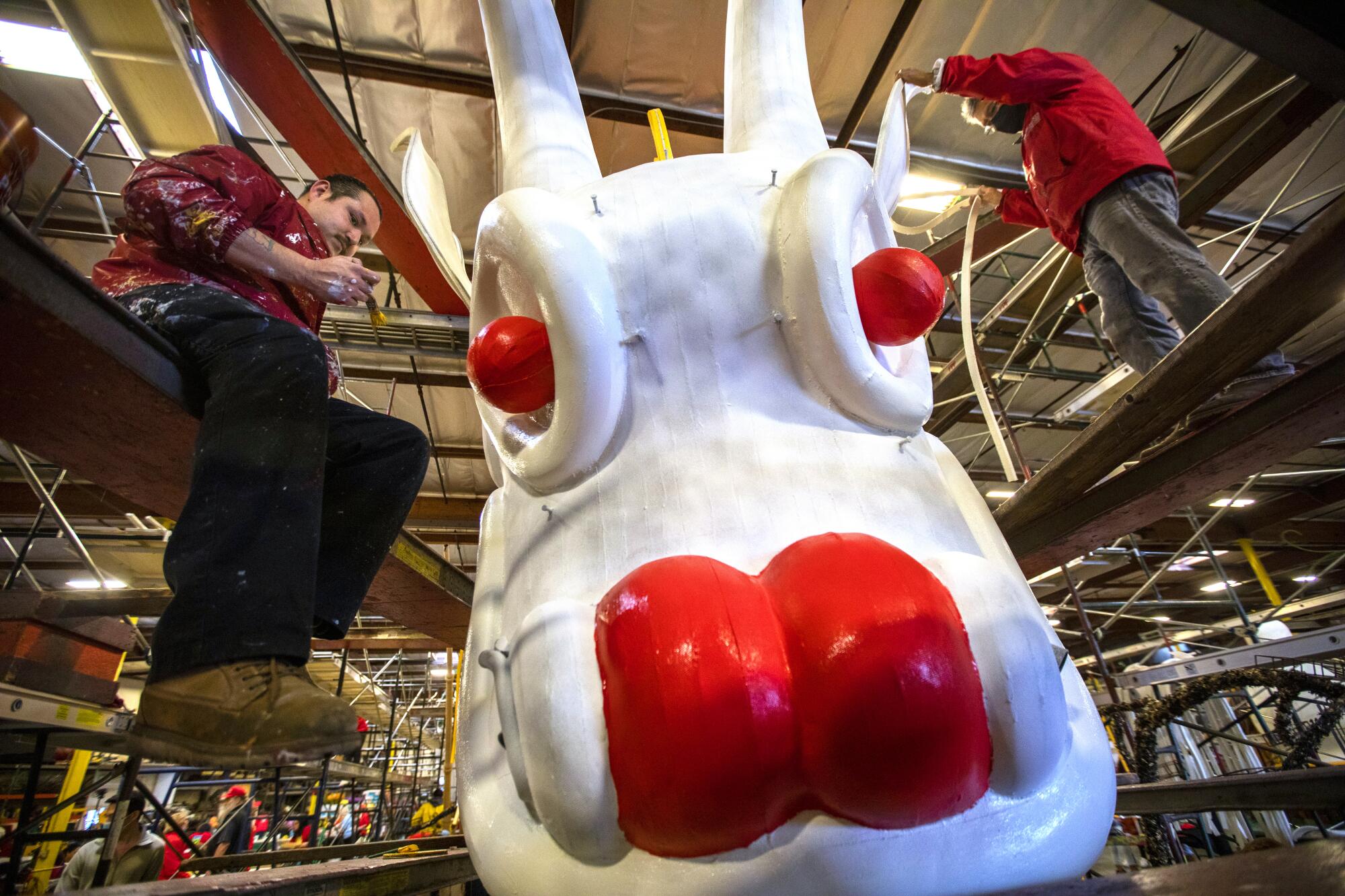
Ivan Villegas, 32, of Duarte, and Vicente Avila, 60, right, of Pasadena, are working on the Donate Life “Lifting Each Other Up” float at the Fiesta Parade Floats on Dec. 29, 2022.
(Francine Orr / Los Angeles Times)
“I would say, ‘Look, Mom, I worked on those flowers on that float,’” she recalls. “And my mom would say, ‘Oh, that looks really nice, honey.’”
She paused to raise her glasses and wipe away her tears.
“It's all over now,” he said. “It's sad.”
Nearby, using a metal cutter to turn a bird sculpture into scrap metal, Marcus Pollitz, 60, said it has been devastating to destroy works of art that involved so many workers like him.
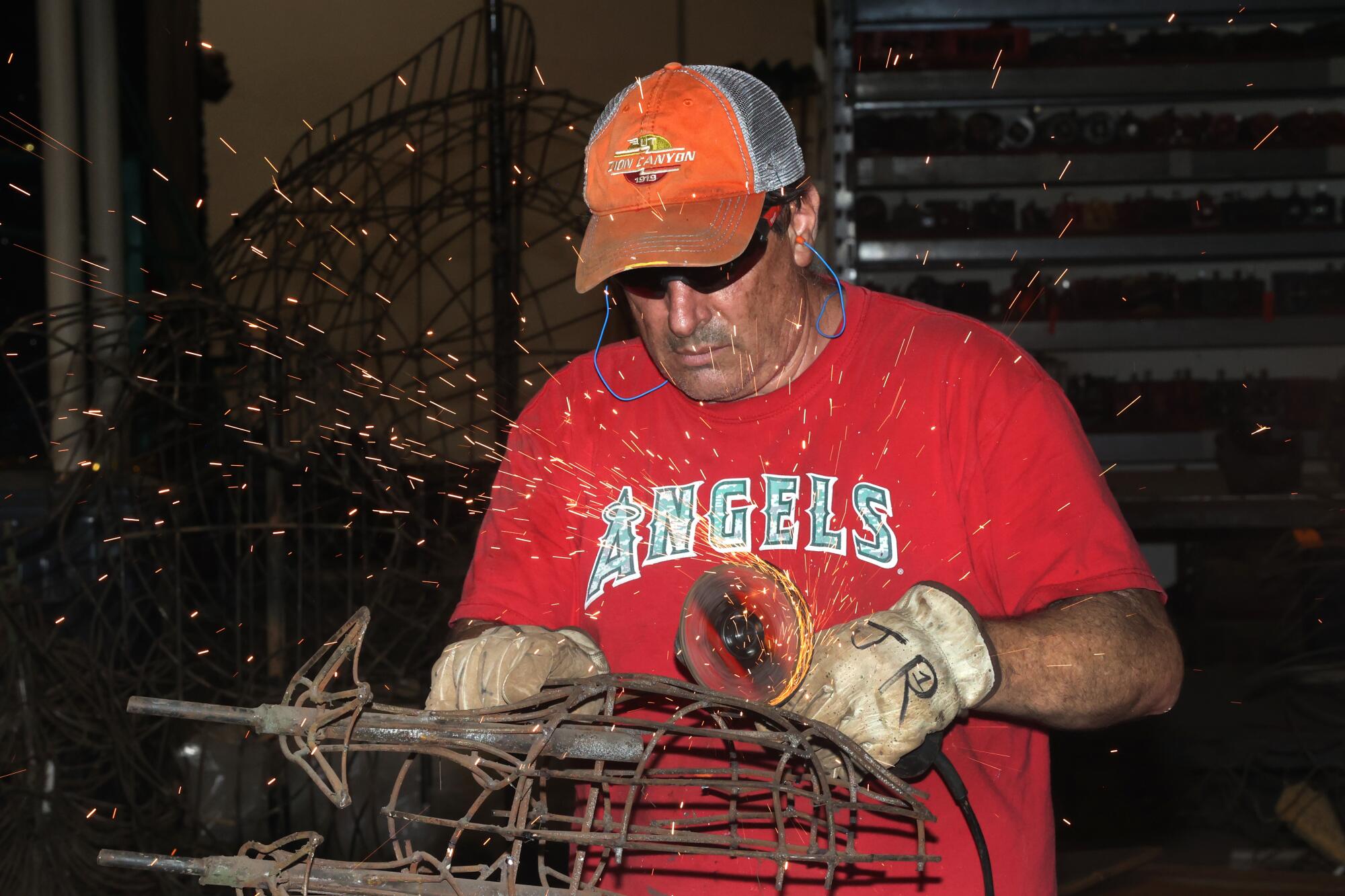
Marcus Pollitz works on the initial stages of a float at the Fiesta Rose Parade Warehouse on Thursday.
(Michael Blackshire/Los Angeles Times)
“We always cut things off at the end of the year and put the best stuff aside, but now we’re not going to see it again, it’s very sad,” he said. “Everything you see here was sculpted by a welder, painted and embellished to look like the concept.”
Pollitz said he felt a sense of emptiness when he heard Estes tell staff that the business was going out of business.
“There was no miracle to be expected from this,” Pollitz said. “There was no one standing behind us to lift us up and take us to the next step. Instead, we have to prepare to close.”
On Thursday afternoon, the sound of circular saws, the engine of a forklift and metal falling to the ground echoed throughout the warehouse. Workers screamed as a Vicente Fernandez song played over speakers attached to the ceiling.
Welding sparks shot up as workers took apart old floats and some swept the floor.
It was approaching closing time when Estes left his office and walked through the 80,000-square-foot warehouse, stopping to talk to workers and occasionally to light his cigarette.
“I wanted to continue doing this for four or five more years, not retire,” he said. “But now it seems I have no other choice.”

